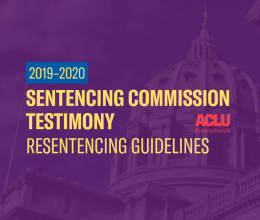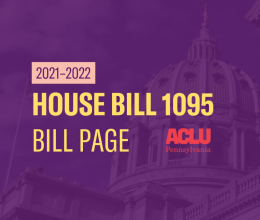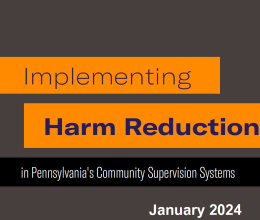
Mandatory minimum sentences
Mandatory minimum sentencing is used when an individual is convicted of a specific crime that by law requires that person to serve a minimum amount of prison time. The problem is, the threat of serving a mandatory minimum sentence can be an incentive in causing an individual to strike a plea deal even though they may be innocent.
What's more, mandatory minimums have been shown time and again to disproportionately impact people of color in communities that are over-policed, as well as individuals who have committed low-level offenses like drug charges.
The Pennsylvania Supreme Court struck down most of Pennsylvania’s mandatory minimum sentencing laws in 2015. Since 2017, some lawmakers in Harrisburg have been trying to pass a bill re-establishing mandatory minimums, in line with the court’s ruling. A version of this bill may have its best chance yet to pass in 2019.
Mandatory minimums also cost taxpayers more money. If the Pennsylvania legislature successfully reimplements mandatory minimums, the law could cost Pennsylvania taxpayers up to $85 million annually.
Finally, mandatory minimums do not deter crime. A 2009 report from the Pennsylvania Commission on Sentencing found that most Pennsylvanians could not name a single offense that carried with it a mandatory minimum sentence.
Alternatives to mandatory minimum sentences
Judges should have the discretion at sentencing to determine the appropriate length of a sentence, based on the individual circumstances of a case, not a blanket mandate by the legislature.
Risk assessment instruments at sentencing
A risk assessment instrument (RAI) is a tool used by judges in court proceedings that considers a number of different factors and purportedly give the judge a measurement of risk as to whether the individual before them will commit a crime in the future. These forumlas, based on existing data steeped in racial and other biases, only reinfoirce mass incarceration and the racial disparities underpinning the criminal legal system.
Alternatives to risk assessment instruments at sentencing
As with alternatives to mandatory minimum sentencing, judges should have the discretion to make an individualized assessment of what sentence is appropriate based on the circumstances of the case and the person being sentenced. Sentencing can not, and must not, be a one-size-fits-all policy.
Ending life without parole
Pennsylvania is one of only six states that deny any opportunity for parole to individuals serving life sentences. Consequently, in 2012, the state had the second-largest population of individuals serving life-without-parole sentences in the country.
In 2016, 5,478 individuals in the Pennsylvania prison population were serving a life sentence, accounting for 11 percent of the prison population. This is an increase of 26 percent from 2006. In 2016, the average age of those serving life sentences in Pennsylvania was 47.5 years.
The Pennsylvania General Assembly can amend the state’s criminal code to significantly reduce high maximum sentences across the board, in particular for drug offenses,assault, robbery, and burglary.
Stakeholders, including the courts and district attorneys, can also work to increase the availability and use of shorter-term incarceration programs, a number of which are already on the books, such as State Intermediate Punishment, Boot Camp, Recidivism Risk Reduction Incentive, and County Intermediate Punishment.


